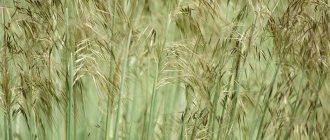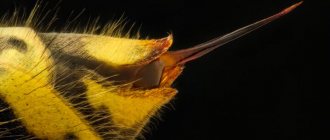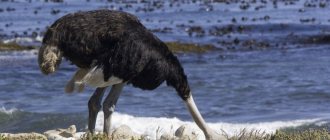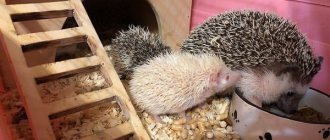The emu bird is indigenous to Australia. The species was discovered in the 17th century, but the ostrich (as emu is commonly called) still arouses genuine interest among ornithologists. Feathered representatives of the fauna have an easy-going nature and are famous for their endurance. Australian farmers practice backyard poultry farming. Russian breeders also adopted the experience.
Origin of the species
The emu was first discovered by European explorers in western Australia in 1696. After the formation of the first settlement in the east of the mainland in early 1788, the first written mention of birds was made by Captain Arthur Philip and ornithologist John Latham.
At the end of the 18th century, the species was named after one of the regions of Australia. At that time the area was known as New Holland. The birds were called "Cassowaries of New Holland".
During the study, the etymology of the word “emu” was never determined. There are two assumptions:
- translated from Arabic “emu” is a large bird;
- comes from the word "ema" (it has Portuguese roots) and is intended to refer to large birds.
Until 1880, emus were classified as ostriches. It was later concluded that birds have many significant differences. The emu was eventually placed in the cassowary family.
They tried to raise emu on farms in Australia in 1987. The attempt was successful.
Appearance and character
The emu is a large bird that cannot fly. She ranks second among the feathered giants.
Emu dimensions:
- The height of the male is about 2 meters, the female is slightly smaller - no more than 1.5 meters;
- weight reaches 55 kg;
- newborn members of the family weigh no more than 500 grams.
Externally, an emu is very similar to an ostrich:
- the body is dense, has an oblong shape;
- there are three fingers on both limbs;
- the wings are small and poorly developed, pressed as close as possible to the body (mainly used to protect the chicks from predators);
- the head, small in diameter, is located on a narrow but long neck;
- the predominant color on the beak is pink;
- color gray with a brown tint.
The color scheme of females and males is approximately the same. Scientists distinguish several types of emus depending on the color saturation of their plumage:
- Woodward - has pale feathers and lives in northern Australia.
- Rothschild - has a darker plumage color, lives in the southeastern part of the mainland.
- The new Dutch ostriches are gray-black in color (you can meet representatives in the same place as Rothschild).
Emu's vision is excellent. They notice danger when it moves 100 meters away. The ostrich's eyes are protected by a membrane, the eyelashes are long and stand out well.
What makes the emu unique is its speed of movement. They have toned legs. The bird can easily run up to 50 km/h.
An emu can be heard long before it comes into view. If a bird decides to communicate with its relatives, its call can be heard over a distance of up to 2 kilometers.
The emu's voice is unpleasant. Birds make sounds similar to grunting, knocking and clicking.
Despite its size, the emu is a friendly bird. She lives calmly next to people and loves to look them in the eyes. The only time when you should be wary of birds is during the mating season. They become aggressive.
Diet planning
Of course, feeding emus what they eat in their homeland will not work. Birds reared in artificial conditions have adapted to the local vegetation and eat grass, for example, clover and alfalfa, as well as tops of garden plants, greens, and forbs. In the summer, ostriches can even be grazed on ordinary pastures, and hay and silage can be stored for the winter.
Emu will not refuse fruits, berries, and vegetables. In addition, the diet should contain grain mixtures with the addition of premixes, bone meal, chalk and salt. Each ostrich is given 3 kg of feed per day, and half of this amount should be taken up by roughage and succulent feed.
See also
How many kilograms does an ostrich weigh and a table of indicators depending on the breedRead
You can replace mash with poultry feed. Of course, you will need a lot of it, but using ready-made mixtures is beneficial - they are stored for a long time, do not spoil, and do not take up much space. But the most important thing is that birds grow faster on this diet than on grass-grain mixtures. When industrially growing emu, it is recommended to choose this option.
To prevent birds from feeling thirsty, they need to be watered 3 times a day. The drinking bowls must have fresh water, so it needs to be changed every day. Like other birds, emus need small pebbles, which must enter the stomach to grind food. Therefore, you need to place a vessel in the poultry house and pour fine gravel into it.
Features of lifestyle and behavior
Emu prefers open steppe areas for its residence. They live separately. Sometimes they can gather in groups, no more than 7 individuals in one. In this case, they pursue the goal of finding food or a new place to feed, but only at the time of reproduction.
The ostrich drinks water once a day. Although you can often see a bird near a pond. She loves to swim.
Birds are active no more than 7 hours a day. They spend all their time getting food.
Where does it live and what does it eat?
The largest concentration of emus has been recorded on the Australian mainland. Birds live in the wild.
You can meet the bird in areas where there are no large crowds of people or thickets, but there are many bodies of water. In their homeland, ostriches can live in any area. They are good at climate change. They feel normal both at a temperature of + 45°C and at - 15°C.
The emu's main diet consists of plant foods:
- young shoots;
- plant roots;
- cereals;
- grass;
- juicy fruits.
They do not refuse to feast on animals:
- insects;
- shellfish;
- lizards;
- small birds.
Ostriches feed exclusively in the morning. The bird has no teeth. Therefore, in order to digest food, she eats sand, small pebbles, and sometimes glass.
The approximate amount of food per day is 1.5 kg.
Ostriches can enter someone else's private territory and feast on vegetables from the garden. They behave without restraint and can cause serious damage to agricultural crops.
In the 20–30s of our century, this became the reason that people began a real hunt for emu. The result of the war was more than 57,000 killed individuals.
The battle with the birds is not over. However, now murders on such a scale have not been recorded. The birds are subject to Australia's Environmental Protection and Biodiversity Conservation Act.
Their habitat
Emu ostriches have settled on the Australian mainland, but at the same time avoid noisy and populated areas, too dry areas and densely planted forests. Wild birds can often be found on the roads of Australia; they can simply cross the road, like an ordinary domestic animal. Very often, farmers see them in their fields, where they can harm crops, so these birds are often exterminated.
It is also worth noting that, having settled on Australian territory, Emus spread further, and merciless deforestation expanded the space where these birds found suitable conditions for living and breeding. In general, in their natural environment they live an average of 20 years. But as a rule, many birds live only to 10. Dingo dogs, hawks and eagles are considered enemies of the ostrich. An ostrich can fight off dogs with its powerful paws and claws, but it has to flee from birds of prey.
Reproduction
The emu is a bird that reproduces using eggs. The process is not complete without mating games. The male behaves as follows:
- located in front of a female individual;
- lowers his head as low as possible;
- swings it in both directions;
- after that it goes to the place where the future nest is located.
It is the males who prepare the place for hatching offspring. They form a small hole in the soil, lined with leaves or dry grass.
Females can only lay 1 egg at a time. Each weighs at least 700 grams. About 50 eggs from different females are concentrated in one place.
The male does the incubation exclusively.
Not all 50 chicks will be born. An ostrich cannot cover all its offspring with its body. Even though he sits on them 20 hours a day for 55 days.
The male leaves the future ostrich chicks only for the sake of searching for food. Over the entire brooding period, the individual loses about 20 kg of its weight. The fat that accumulates in advance helps him survive.
After hatching, the father of the family also takes care of the chicks. He protects small emus from enemies, feeds and cares for 7 months. After mating, the female goes in search of a new gentleman.
Breeding rules
The breeding season for emus is December-January; with artificial breeding, it is in the spring. An ostrich family consists of 1 male and 1-2 females. One female lays up to 10 eggs with green shells weighing 0.7-0.9 kg each. The male incubates the eggs for 50-60 days. He sits in the nest almost 24 hours a day, but leaves for a while to eat. During incubation, ostrich eggs turn from green to blue-green. This means that the chicks develop successfully in them.
The chicks hatch weighing 0.5 kg. They grow quickly, sexual maturity occurs at 2 years. When breeding in an incubator, which is used on ostrich farms, in order not to keep many males, the temperature is maintained at 37-38 ° C and humidity at 40-70%.
After hatching, the chicks are sent to a room separate from the adult birds.
There they are kept until 3-4 months of age at a temperature of 20˚C. Then they are released for general grazing. In the first days, ostrich chicks, like chickens, are fed a mixture of boiled eggs, cottage cheese and greens. Then the young animals are transferred to light feed intended for chickens. By the age of one month, ostrich chicks can be accustomed to grain mash, greens, vegetables and fruits. You can also feed them on mixed feed if such feeding is profitable. The advantages of compound feed are the rapid growth of chicks and adult birds, ease of use. Disadvantages - high cost. The Australian emu can be a good investment. If you need to choose where you can make a profit, then you need to pay attention to the breeding of this bird, which is still exotic for agriculture.
Natural enemies
Due to their size, emus have few natural enemies. Dingo birds (domesticated wolf) are feared. Dingo tries to deal with the emu, aiming for the bird's brain. She pushes the animal away, jumps up and delivers a strong blow to the head with her beak.
The jumps are high, so it is difficult for the wolf to cope with the ostrich. Dingoes do not affect the number of emu deaths.
Another predator that threatens the emu is the wedge-tailed eagle. It does not attack adults, because it cannot cope with them. The eagle's target is young birds.
Few pose a threat to adult individuals, but you don’t mind enjoying ostrich eggs:
- large lizards;
- red foxes;
- wild dogs and wild boars (the latter can eat chicks);
- eagles;
- snakes.
Emus often die under the wheels of trucks and during targeted hunting.
Productive characteristics of emus
The raising of these unusual birds is practiced mainly to obtain incredibly large eggs from them, which contain large amounts of protein and other useful microelements.
In addition, ostrich feathers are also used in light industry, which are processed and become decorative elements:
- interior items;
- clothes;
- decorations, etc.
Ostrich feathers are used to create various household items
Leather goods are made from the skin of these birds, such as:
- high quality leather shoes;
- women's handbags;
- suitcases;
- portfolios, etc.
Ostrich egg
Table 1. Egg production characteristics of emus
| Parameter | Description |
| When is masonry done? | Most often, female Emu ostriches lay eggs in winter, in January and February. |
| Quantitative and qualitative description of the product | One clutch contains from 2 to 30 units of product, having an elongated, rounded shape, typical of eggs, and an unprecedented weight of 650 grams. For comparison, one ostrich egg can replace about 30 chicken eggs. In addition, the shelf life of this egg, even if kept in a warm place, can be up to a year. |
| Duration of the egg-laying period | The fertile period of female ostriches lasts approximately 20 years, during which the females continue to produce eggs in consistently large quantities. |
The meat product supplied by emus is also popular. It is very nutritious and tastes like tender veal.
Economic importance of poultry
The emu has become the target of hunting in Australia. Birds were killed not only for meat. Fat was used as a material for making medicine (rubbed into the skin) or it served as a lubricant.
Paints for ritual ceremonies were made from the fatty tissue of the emu.
Breeding ostriches for trade began in Australia, in the western part of the mainland in 1987. People received their first profit in 1990.
The bird is bred for:
- meat - is considered lean, because it contains less than 1.5% fat, the cholesterol level does not exceed 85 mg per 100 g;
- leather - due to its patterned surface, leather is often used to make wallets and shoes;
- oils and fats - material for making cosmetics;
- feathers - used in decorative or applied arts;
- eggs - eaten, shells used in crafts.
There is increased interest in emus around the world. There are ostrich farms in almost every country. The largest recorded:
- in China;
- in USA;
- In Canada;
- in Peru.
Productivity
Outside the Australian continent, emu is grown in North America, Peru and China and other countries, although to a lesser extent. Birds are primarily raised for their meat, eggs, skin and fat. The meat is lean, high in protein and low in cholesterol. It is red in color and looks and tastes like beef. Lenten and refers to dietary products. It can be used by people of any age, healthy and sick, and overweight people. Slaughter yield is on average 55%.
Each female can lay up to 50 eggs. Each can replace 10-15 pieces of chicken at once. Ostrich eggs can be boiled, fried, or made into an omelet. The durable shell is used for crafts. Healthy female emus can lay eggs for a maximum of 20 years. Fat is used to prepare medicinal and cosmetic products. Leather - for making bags, shoes, clothes, wallets. Products made from ostrich leather are valued for their beauty, original texture, strength, durability, and moisture resistance. Feathers - for decorating dresses and hats.
See also
How many eggs can an ostrich lay per day, month and year, hatching featuresRead
Breeding emus at home
The emu is actively grown at home, even in the northern regions of the globe. The reason for the demand is not the whimsical nature of feathered pets regarding their living and food conditions.
There are farms in Russia that specialize in emu breeding, but there are not many of them - a little more than 100 throughout the country. In our country, legalizing the import of poultry and opening a business is not easy. Before purchasing young animals, farmers will have to apply to government departments to obtain permission to breed birds.
After approval, government officials will regularly visit emu habitats to check the conditions of keeping the birds. If discrepancies are discovered, a profitable business may be closed.
You can learn more about the ostrich business in the following video:
Requirements for premises and conditions of detention
Russian farmers should be especially sensitive to the conditions under which emus are kept. Before you start breeding poultry, there are a few things to consider:
- The area of the room in which emus will grow and live should be 15 square meters. per one mature individual;
- the matter cannot be accomplished without dense and comfortable bedding;
- cleaning and disinfection of the floor covering should occur regularly and in a timely manner;
- air circulation will be required (windows that open will suffice);
- at the time of incubation, the optimal room temperature is + 30°C;
- When constructing feeders and drinking bowls, the growth of ostriches is taken into account (if there are individuals of different ages on the farm, there should be several feeders).
Aviary
In the wild, emus live in large, open areas. A farmer who wants to succeed in breeding ostriches must remember this and equip the aviary for birds correctly:
- The site is spacious, about 50–60 sq. meters per adult;
- individual pen;
- a canopy so that the animal can hide from the scorching sun;
- protective fence at least 1.5 meters high;
- the fence is made of fine mesh (the ostrich will not stick its head through and will not be injured).
Wintering
There are no severe frosts in Australia. Therefore, the emu needs to organize comfortable living on the farming territory. It’s good if the room has:
- warm and dry;
- ventilation is present;
- there will be no draft.
Ostriches will be able to survive frosts of -20°C without any problems. If the temperature in the area drops below, the room is insulated with natural materials.
Feeding
Emus are considered omnivorous birds. On farms they are usually fed with compound feed. The nutritional mixture helps you gain weight faster.
To ensure that meat does not cease to be dietary, it is recommended not to overfeed the animal.
Approximate diet of an emu:
- rye bread - 200 g in summer and 400 g in winter;
- oats or barley - 150–300 g;
- oatmeal - 100–150 g;
- carrots, beets, cabbage or potatoes - 200–300 g.
Vegetables become the emu's staple food if grass is not available.
Those farmers who do not trust compound feed can give ostriches:
- dairy products;
- fish waste.
It is worth remembering that emus are not capable of chewing food. You need to add shell rock and small stones to the feeder.
What are the benefits of emu meat and eggs?
The meat is valued for its high juiciness. There is practically no fat. 100 g of product contains less than 100 calories. The most valuable part is the fillet. It contains a huge amount of micro and macro substances necessary for the human body.
200 g of ostrich meat can replenish half of the daily nutrient balance. Eggs contain no less nutrients and vitamins than ostrich meat. The product is hypoallergenic.
Experts recommend eating emu meat regularly, in moderation, for diabetics and people suffering from gastrointestinal diseases. The product has a good effect on cholesterol levels (helps reduce).
Due to the high content of polyunsaturated acids, it is recommended for use by people with diseases of the cardiovascular system.
Interesting facts about the bird
The emu is a unique bird. In addition to the above, it has other features:
- the fastest bird on the planet;
- in one day, birds travel about 30 km;
- the size of an ostrich's eye exceeds the size of its brain;
- the legs are very powerful, with one kick they can kill a kangaroo;
- birds swim well;
- the eggs have an interesting color - from black to rich green (sometimes you can find blue eggs);
- The chick grows rapidly, growing by 1 cm in 24 hours.
Emu is not an ostrich, although birds are usually called that way. The birds are distinguished by their gentle nature, which makes it possible to breed them in household conditions. In Russia, farming is not prohibited, but special permission and the creation of comfortable living conditions for pets will be required. For their efforts, breeders receive healthy, tasty meat and eggs.
0
0
Copy link
Diseases
By nature, ostriches have good immunity, so they can live well in almost any conditions. The optimal temperature for life is considered to be from -15 to +56 degrees.
Under artificial conditions, the mortality rate of these animals is very low, which makes the process of raising them a very profitable activity. Among other things, now not only ostrich meat is in great demand, but also ostrich fat.
Although the ostrich has good immunity and is considered an unpretentious animal, it is not immune from diseases. The most common diseases that occur in ostriches include:
- respiratory;
- poisoning;
- worms;
- gastritis;
- limb deformity;
- hepatitis;
- smallpox;
- mites;
- Newcastle disease.
In general, emus tolerate various diseases well, but despite this, it is important to start treatment on time.











